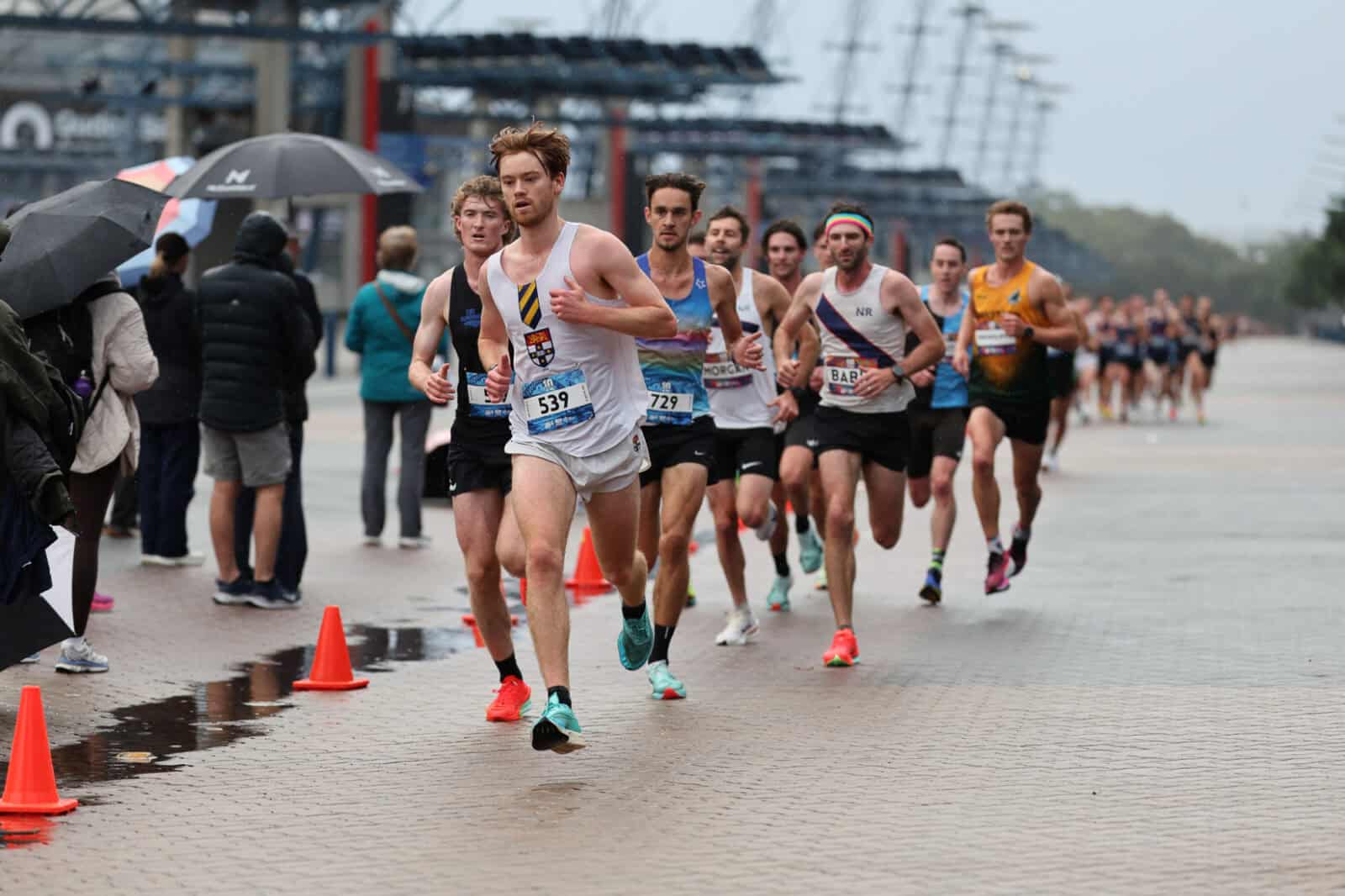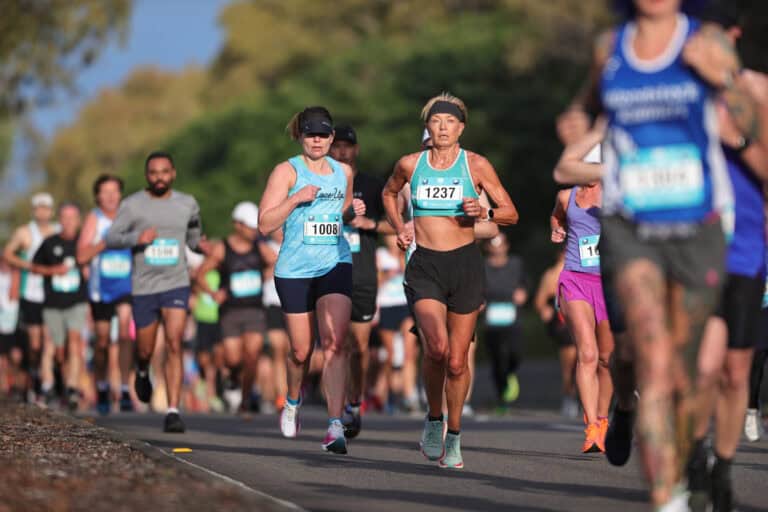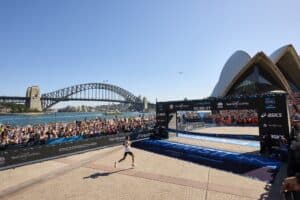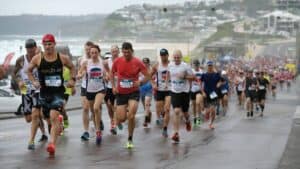In 2025, the Sydney10 solidified its reputation as one of Australia’s premier road running events, welcoming 1,513 finishers across the 10km distance and plenty more across junior supporting races at Sydney Olympic Park. It’s a far cry from its modest roots and historic roots: first held in 1927, just 284 runners completed the NSW 10km Road Championships in 2006, when it was last held at the Holsworthy Army Barracks.
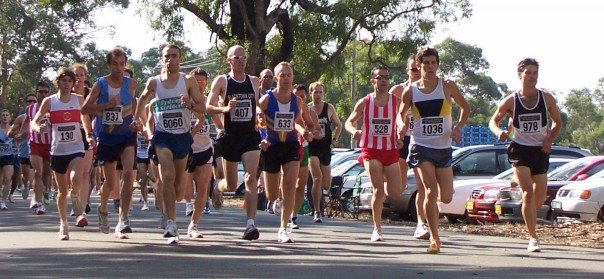
That period marked a turning point for the event. Security restrictions at Holsworthy meant the venue was cancellable at short notice, with only poor substitutes available. With stagnant participation and the relocation of Athletics NSW’s headquarters to Sydney Olympic Park there was a unique opportunity for reinvention. The solution: a partnership with the Sydney Striders, a club that had long championed high-quality community races. In 2008, the event relaunched under the banner of the Athletics NSW / Sydney Striders 10km Road Race — a long name, but one that signalled a new era. It came with some resistance from traditionalists but the proof was in the pudding: an immediate growth to 540 finishers, almost double the year prior.

Now known simply as the Sydney10 and run solely by Athletics NSW since, the event has transformed from a niche championship into a showcase of what modern road events can be: inclusive, competitive, and professionally delivered. The flat and fast loop through Sydney Olympic Park is now one of the most popular 10km circuits in the country, featuring a stadium finish and drawing a mix of elite athletes and everyday runners alike.
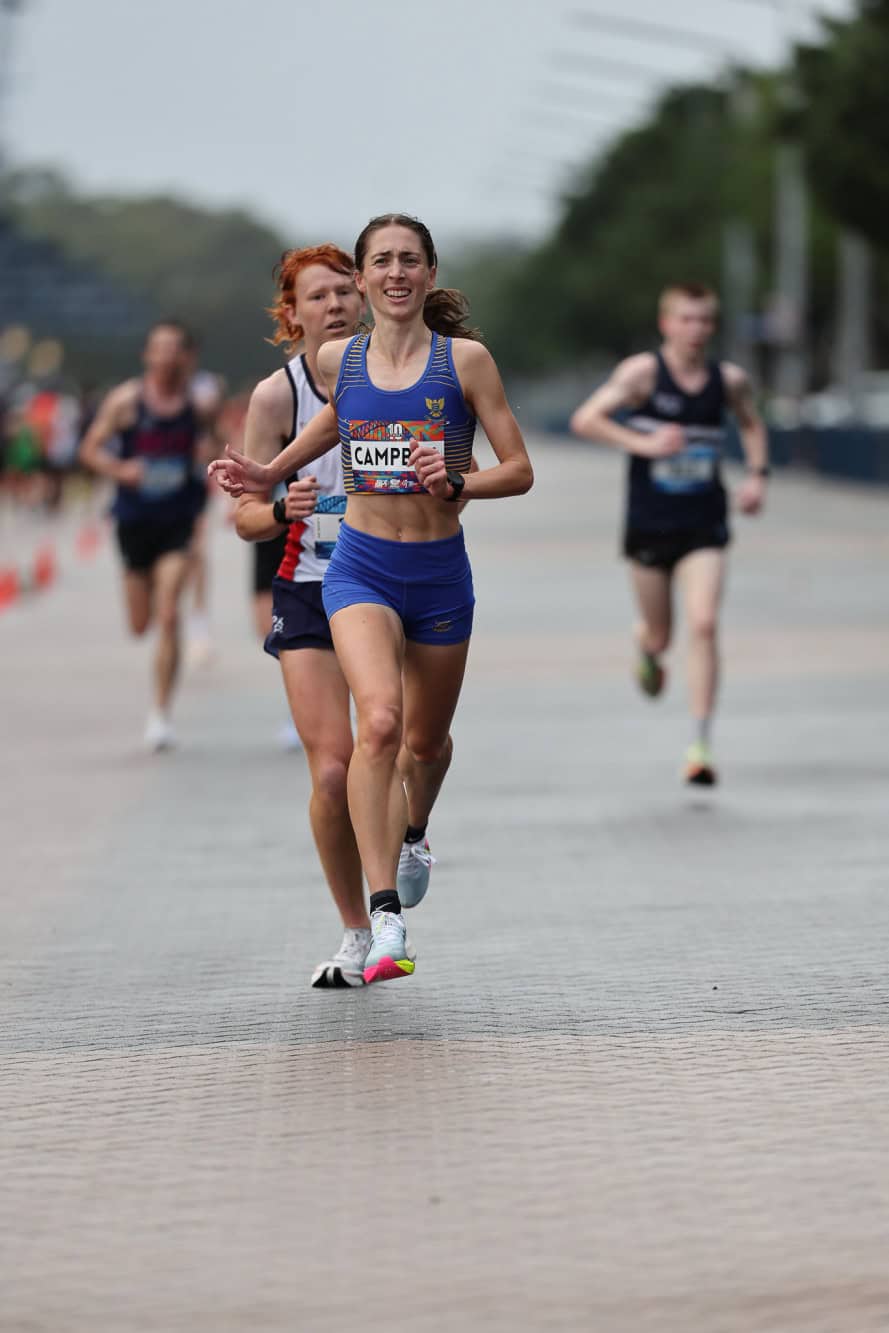
This year’s edition was a celebration of that evolution. While Aidan Velten (29:34) and Holly Campbell (32:18) claimed line honours, the real story lay deeper in the field. From the top end to the back of the pack, participation levels soared — evidence that the race is not just growing, but thriving.
It’s a far cry from twenty years ago, when the race felt out of reach — not just due to its remote location, but because entry was limited to registered Athletics NSW club members. Today, non-members make up the majority of participants, with club runners receiving a discounted rate. While the event still attracts a performance-focused field — the median finishing time was 44:08 (4:25/km) — its sweet spot is among runners clocking between 35 and 45 minutes, where someone crosses the line nearly every second. It’s become a destination for personal bests, drawing participants not just from across Sydney, but from interstate as well.
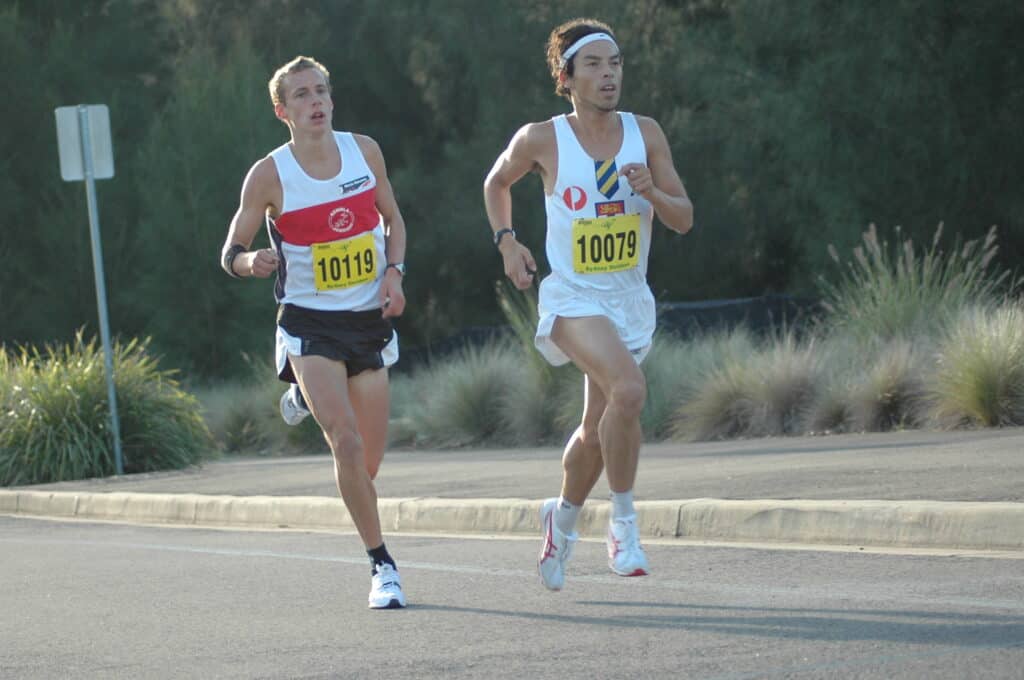
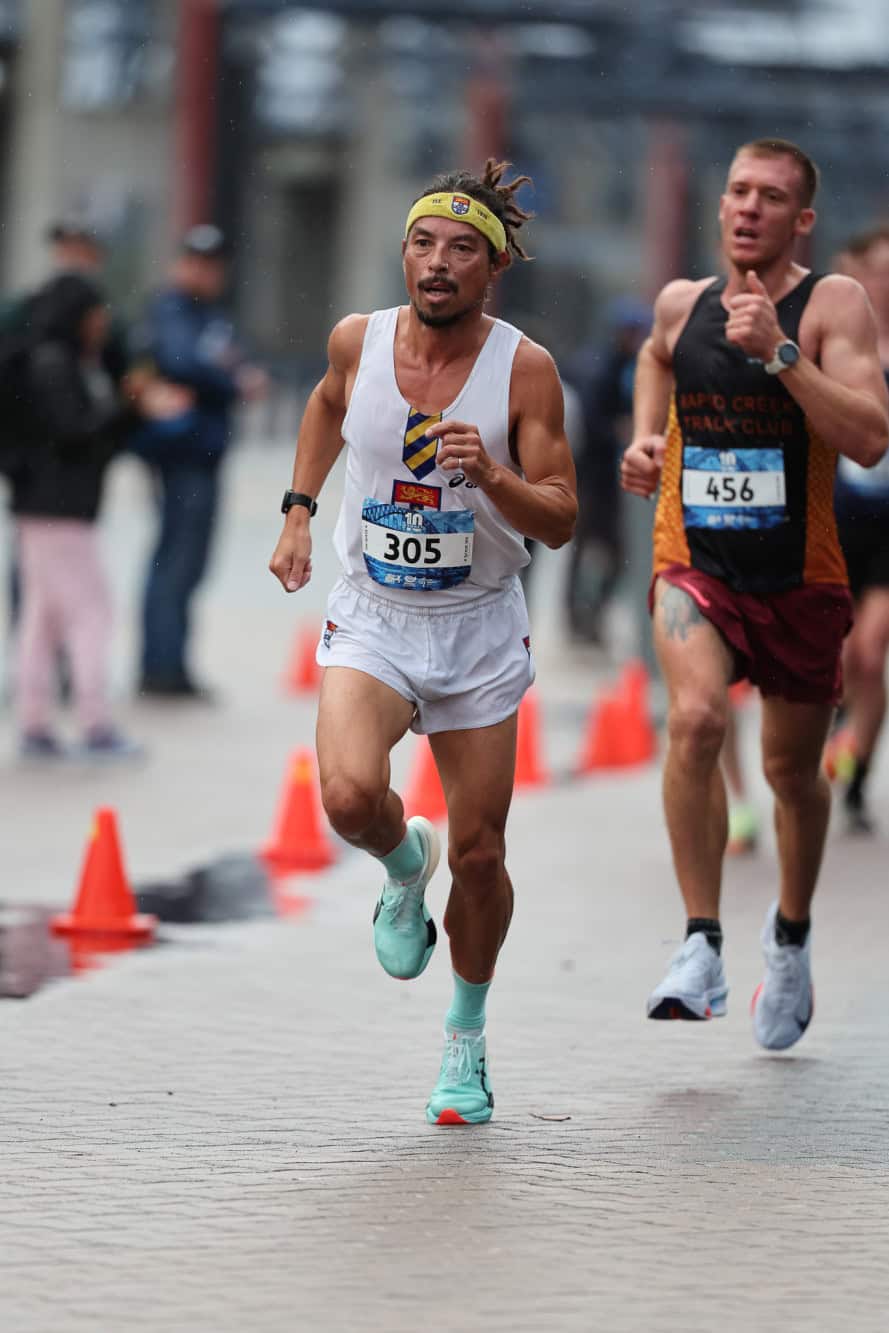
A nostalgic highlight for many was seeing two familiar names from the event’s early days still making their mark. Russell Dessaix-Chin, winner of the inaugural Sydney10 in 2007, returned to claim third in the M45+ category, while Scott Westcott — who won the 2005 NSW Road Championships when they were last held at Holsworthy — took out the age group this year. Their performances serve as living bridges between the race’s past and present — reminders of how far the event has come, links to the athletes who helped shape its identity, and enduring connections to the broader NSW running community.
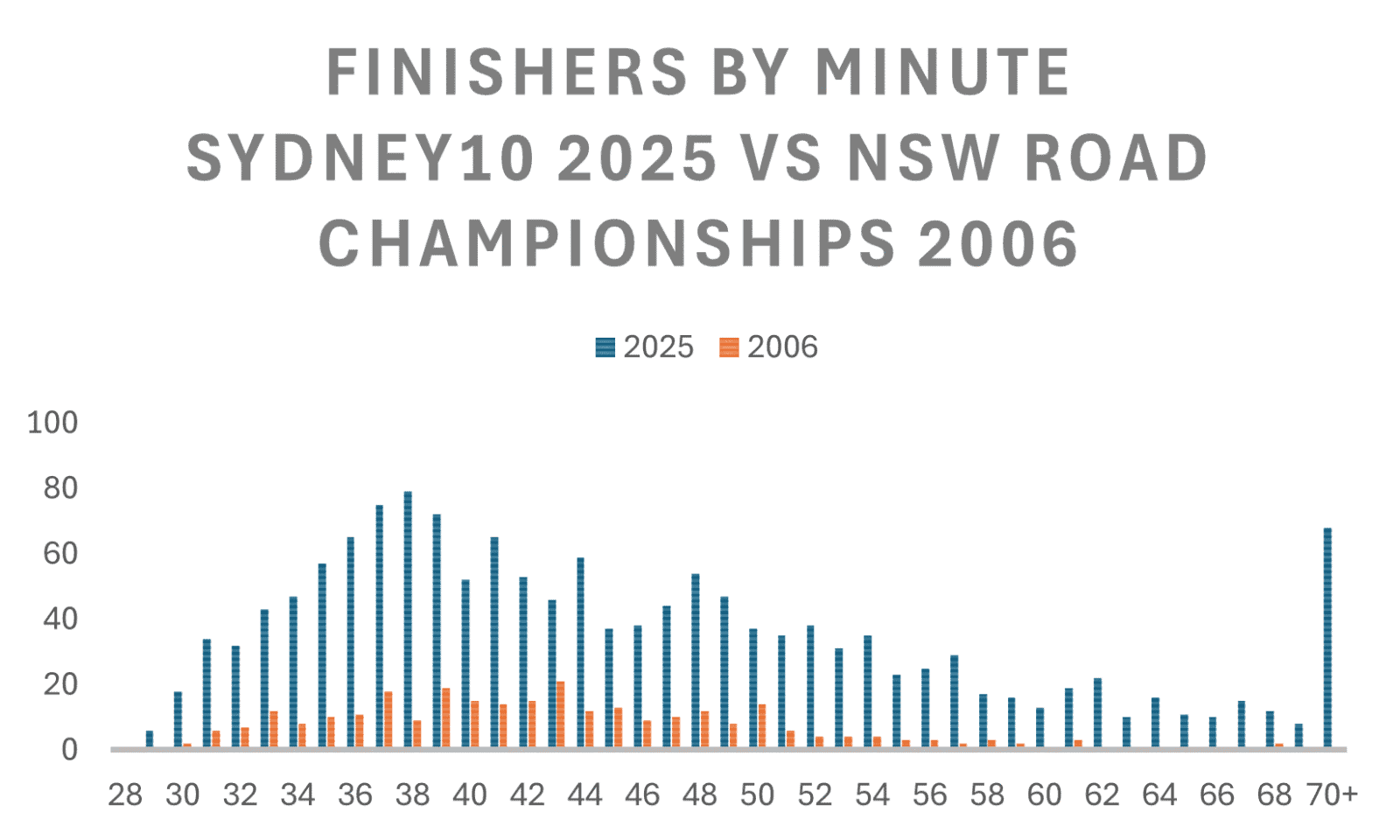
The numbers tell the story best. From just over 500 finishers in its early iterations to more than 1,500 this year, the Sydney10’s growth is no accident. Strategic partnerships, runner-focused course design, and a consistent emphasis on community engagement have turned it into a true jewel in the Athletics NSW calendar.
As participation in road running continues to boom, the Sydney10 stands as a model of how to build an event that caters equally to elite performance and mass appeal: a state championship that doesn’t feel exclusive, a fun run that doesn’t sacrifice competitive integrity.
From army barracks to Olympic Park, the Sydney10 has come a long way — and with the finish line now firmly inside a stadium, the only way is forward.
Run the Sydney10? Leave a review to help other runners
Photo Gallery
Head over to our sister site, Inside Athletics, for full photo coverage from the day with over 2000 photos free to download.
